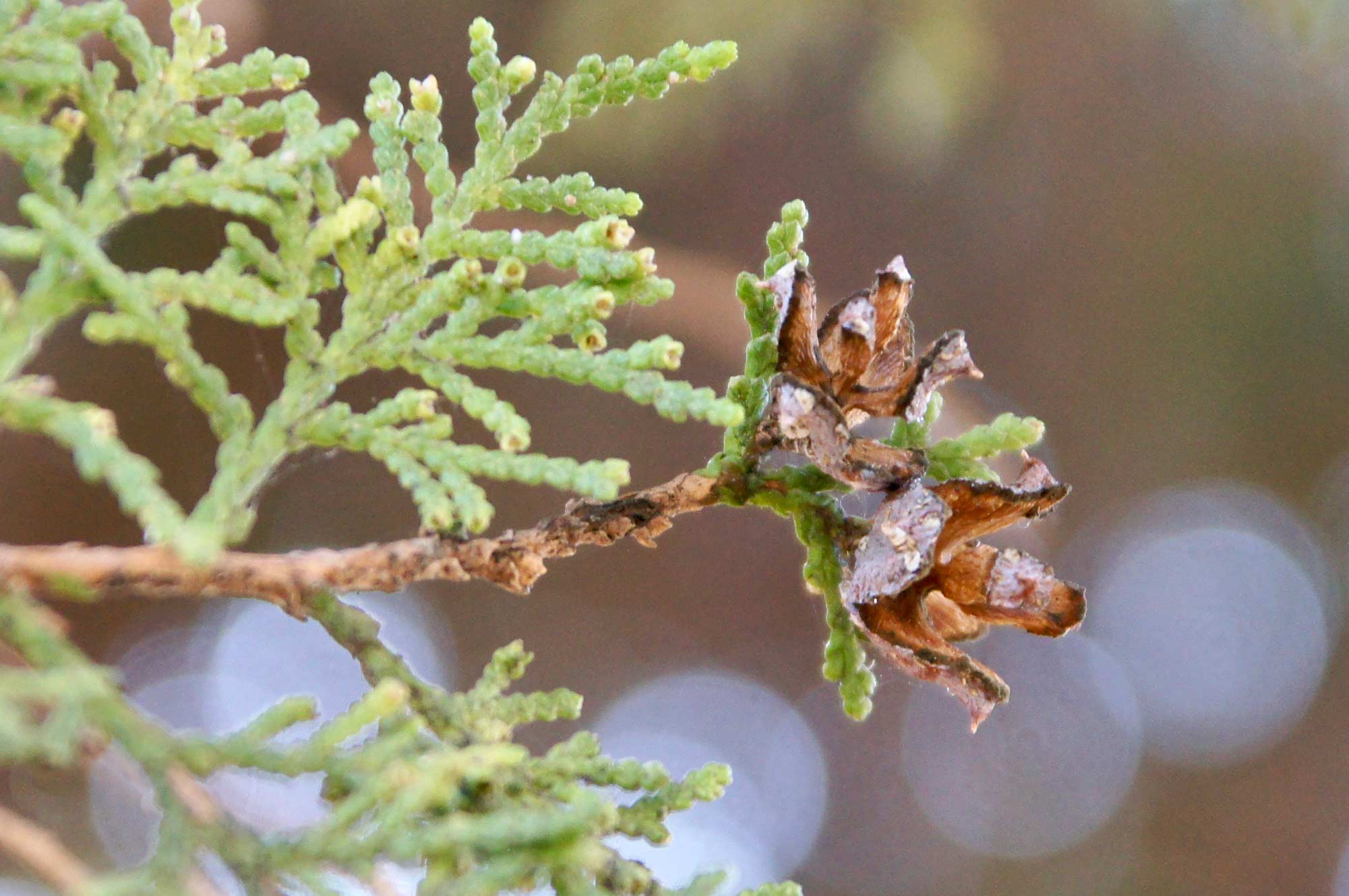Platycladus orientalis
 Oriental arborvitae
Oriental arborvitae


As with American arborvitae (Thuja occidentalis), many varieties are cultivated ranging from extreme dwarf forms 2 to 3 feet tall to very fancy shapes and colors. The flat leaf sprays are disposed in vertical planes. When ripening, the cones may exhibit a luminous blue bloom that attracts attention; when crushed, they have a pleasant fragrance.
Specimens were planted in the 1890s in the Arboretum (and recorded then under no less than three names: Thuja tartarica, Thuja nepalensis, and Biota orientalis) and then abundantly around campus. Many old neglected specimens can be seen strewn around the Arboretum, for example between Museum Way and Campus Drive, or behind the Mausoleum. These are mostly stunted, presumably because of the lack of summer water, but they clearly possess ability to survive. One venerable specimen is at the Bakewell Building, 355 Galvez Street, at the north end. Another grows to the right of the front steps of Phi Sig, 1018 Campus Drive. Six iconic specimens flank three sets of steps leading up to the Main Quad from Jane Stanford Way. Five of them have golden highlights on their foliage; the sixth is different.


Illustrations: cone comparisons of Thuja species.
Name derivation: Greek platys, broad, klados, branch, referring to flat leaf sprays; Thuja – Greek name thuia for a type of juniper; orientalis – eastern.
About this Entry: The main text of this entry is from the book Trees of Stanford and Environs, by Ronald Bracewell, published 2005. Arboretum note and several locations moved here from T. occidentalis entry; records are in Thomas Douglas’s diary notes and LeRoy Abrams’ Gymnosperms survey (May 2024, SP).



